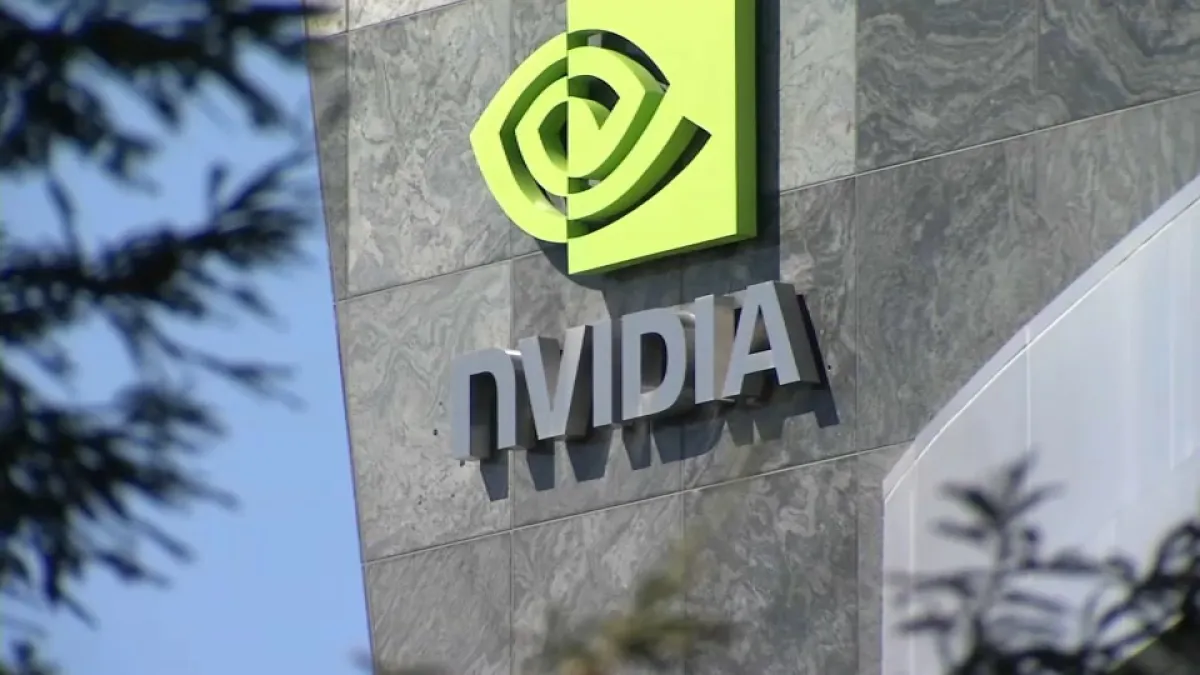Copyright Forbes

In March 2022, Shell sold more than 20 LNG cargoes as "carbon-neutral," backed by nearly five million credits from rice farms in China's Anhui province. The credits flowed through Verra—the leading voluntary carbon registry—based on claims that irrigation upgrades had slashed methane emissions. However, a 2024 investigation found that the infrastructure was never built, and the emissions reductions never happened. It wasn't Verra's first credibility crisis. A 2023 investigation by The Guardian, Die Zeit, and SourceMaterial found that roughly 94% of Verra's rainforest credits didn't represent real reductions. A system built on trust was minting climate fiction. At the same time, cryptocurrency was in a speculative frenzy. Bitcoin surged from $10,000 to $60,000. Ethereum and Solana rallied. FOMO was the draw and the chance to get in early. But the reality was punishing. Hot wallets, cold wallets, hardware wallets, seed phrases, private keys—an avalanche of jargon. Gas fees cost $50 to move $100. Smart contracts you couldn't audit. One malicious line of code could drain your account overnight. Most people just wanted to buy Bitcoin like Apple stock—click, watch the number go up, maybe sell later. They didn't want to become their own Swiss bank. Complexity created dependence. And that dependence was about to be exploited. FTX arrived with a seductive pitch: "We'll handle the complexity. You just click buttons." Clean interface. Familiar login. Customer support. It looked like Schwab, acted like Schwab, and for a while, felt safer than trusting yourself with a 64-character string that could never be recovered. Then it vaporized over $8 billion. Genesis froze withdrawals, BlockFi and Voyager collapsed, and platforms built on "safe custody" proved opaque and fragile. Different industries, different starting points, but identical failure mode: complexity created dependence on intermediaries, and that dependence was eventually exploited until systems broke. What happened next wasn't just a reform. It was the beginning of a fundamental restructuring. Call it the precision stack: sensors to see, AI to interpret, blockchain to record, smart contracts to execute. No trust required. Carbon Markets: From Greenwashing to Machine-Verified After the voluntary carbon market's credibility crisis, a new generation of solutions has emerged built on proof systems, not trust. Satellite imagery confirms forest cover and irrigation systems, IoT sensors track emissions in real time, and blockchain creates an immutable audit trail. MORE FOR YOU The World Bank is leading the shift. Rather than dismantling legacy registries like Verra, Gold Standard, or ACR, it's rebuilding trust by linking them through blockchain infrastructure. The Climate Action Data Trust connects these registries at the protocol layer, making every issuance, transfer, and retirement auditable in real time. The same infrastructure is already tracking the $500 million Metro Manila Flood Management Project, where every disbursement flows through blockchain, cutting administrative friction and creating instant visibility for auditors and project teams. Corporate buyers are increasingly favoring engineered carbon removal over traditional nature-based offsets, driven by the need for durable, verifiable solutions. Microsoft has poured hundreds of millions into direct air capture (DAC) technologies that pull CO₂ straight from the atmosphere, far more reliable than forests that risk burning down. A Bioenergy with Carbon Capture and Storage (BECCS) facility with geological storage spanning thousands of years simply cannot be undone by drought or land-use shifts. While nature-based offsets remain valuable for immediate impact, engineered removals offer unmatched permanence, backed by continuous monitoring via sensors, satellites, and blockchain audit trails. In 2024, Microsoft alone purchased 5.1 million tons of engineered carbon removal, representing 63% of the global market. In today's market, machine-readable, auditable truth isn't just a nice-to-have—it's the entry ticket to credible climate action. A new layer of solutions is pushing the precision stack directly to projects—combining satellite data, IoT sensors, and on-chain recording at the ground level. Rather than relying solely on centralized registries, these platforms automate verification in real time and channel funding toward confirmed outcomes in renewable energy and conservation. As an example, Preshent uses AI and blockchain to verify sustainability milestones through distributed pilots in partnership with Tribal Nations, expanding to regional and global partners. Its JR AI engine automates verification while PRSH Finance records transactions and channels funding toward verified outcomes across renewable energy and conservation projects. The pattern is consistent: proof moves from annual audits to continuous monitoring, from PDF reports to on-chain records, from trust-based claims to sensor-backed truth. Financial institutions are now building the infrastructure to make this scalable. Carbonplace, a consortium of nine global banks including UBS, BNP Paribas, and Standard Chartered, is constructing a blockchain-based network for institutional carbon credit trading, creating the banking rails for tokenized environmental assets. Regulators are not catching up—they are locking in. The U.S. Commodity Futures Trading Commission now classifies tokenized carbon credits as regulated commodities. The G20 has endorsed distributed ledger standards for audit infrastructure. The EU has begun approving blockchain-based MRV (Monitoring, Reporting, and Verification) pilots as part of its compliance infrastructure. Analysts project tokenized credits could reach $50 billion by 2030. Crypto Trading: When Code Replaces Confidence Tools that once belonged to hedge funds are now accessible to individual traders. No-code platforms, such as Coinrule and 3Commas, let users deploy algorithmic strategies such as grid trading, arbitrage, and momentum plays with a few clicks. Copy-trading platforms like eToro allow novices to mirror professional strategies tick-for-tick. Meanwhile, trading costs have collapsed. Some exchanges charge around 0.01% per trade, making it economically viable to run strategies that once required engineering teams and institutional infrastructure. Retail traders can now access leverage levels previously reserved for professional desks. Exchanges are racing to lower barriers. Coinbase now offers nano-sized Bitcoin and Ethereum futures, contracts representing 1/100th of a Bitcoin, letting users learn derivatives without committing large capital. Webull went further in October 2025, partnering with Coinbase Derivatives to list Dogecoin, Solana, Litecoin, and XRP futures, giving retail traders a single interface for equities, options, and crypto derivatives. Then there's Bybit, where more than 20 million accounts can access up to 100x leverage on major perpetual futures pairs. A $1,000 account with 100x leverage controls $100,000 in exposure, a level of market power that would have been unthinkable for retail traders a decade ago. But access to tools doesn't equal access to institutional-grade intelligence. Retail traders face a structural disadvantage in futures markets: they lack the institutional-grade probability data and execution infrastructure that professional desks use to identify statistical edge and minimize emotional decision-making. Platforms like Edgeful are addressing this gap by providing probability analytics across 100+ historical market scenarios, analyzing patterns from gap fills to volatility reversals. Real-time screeners identify trades based on probability thresholds, auto-plotting levels on TradingView and NinjaTrader and connecting to brokers to execute trades using preset risk parameters. Whether retail tools can replicate anything close to an institutional edge remains doubtful. Professional desks process thousands of signals per second, co-locate servers near exchange engines, and deploy capital at scales an individual can't replicate. Automation can enforce risk rules and execute strategies around the clock, and that matters, but it's not the same as competing with the machines. Regulators Shift From Policing Behavior to Auditing Code The rise of AI-driven execution introduces a new class of systemic risk. Models trained on historical data can perform flawlessly in backtests yet fail catastrophically when confronted with events outside their training range. When thousands of autonomous agents respond to the same market signal in real time, they don't correct instability—they amplify it. Volatility cascades faster than humans can intervene. Regulators are no longer debating whether AI and blockchain belong in financial markets—they are working to define accountability in systems where trades are executed by algorithms, not people. The core questions have shifted: Who is liable when an AI agent triggers a flash crash? How do you audit a black-box model that cannot explain its own decisions? Yet blockchain offers a counterbalance. Smart contracts execute trades based on predefined logic recorded on-chain, creating transparent audit trails that regulators can monitor. Instead of relying on post-trade reporting, regulators are beginning to supervise markets at the infrastructure level: reviewing the code that governs execution, not just the outcomes. MiCA's real-time audit obligations signal the same shift: machine-readable market structure over post-hoc enforcement. But skeptics argue the precision stack may automate flawed incentives rather than eliminate them. Blockchain verifies that sensors recorded data, not whether sensors were tampered with. The Verra scandal wasn't a technology failure—it was fraud at the design stage where infrastructure was never built. Some blockchain implementations also demand substantial energy consumption. The precision stack accelerates verification but can't replace adversarial auditing that catches intentional deception. It's a powerful foundation, not a silver bullet. AI amplifies risk. Blockchain creates accountability. Regulators are now auditing architecture, not just outcomes. The Precision Stack: Sensors, AI, Blockchain, Smart Contracts Carbon markets and crypto trading began with different failures. One couldn't prove what was real, the other moved too fast to understand. Both reached the same conclusion: manual systems can't govern trillion-dollar flows. The World Bank is using the stack to validate climate impact. Institutional trading desks are using it to execute at machine speed. Microsoft and leading corporations are using it to govern carbon removal. AI interprets reality, blockchain enforces outcomes, smart contracts execute them. The same precision infrastructure is reorganizing both climate finance and digital markets. The implications stretch beyond finance. Supply chains, healthcare records, insurance claims—any system defined by fragmentation or opacity is being rebuilt around the same stack. Markets no longer run on trust. They run on proof. The infrastructure is live. The question facing institutions is no longer whether to adopt proof-based systems, but how quickly they can integrate them as markets restructure around machine-readable truth.



